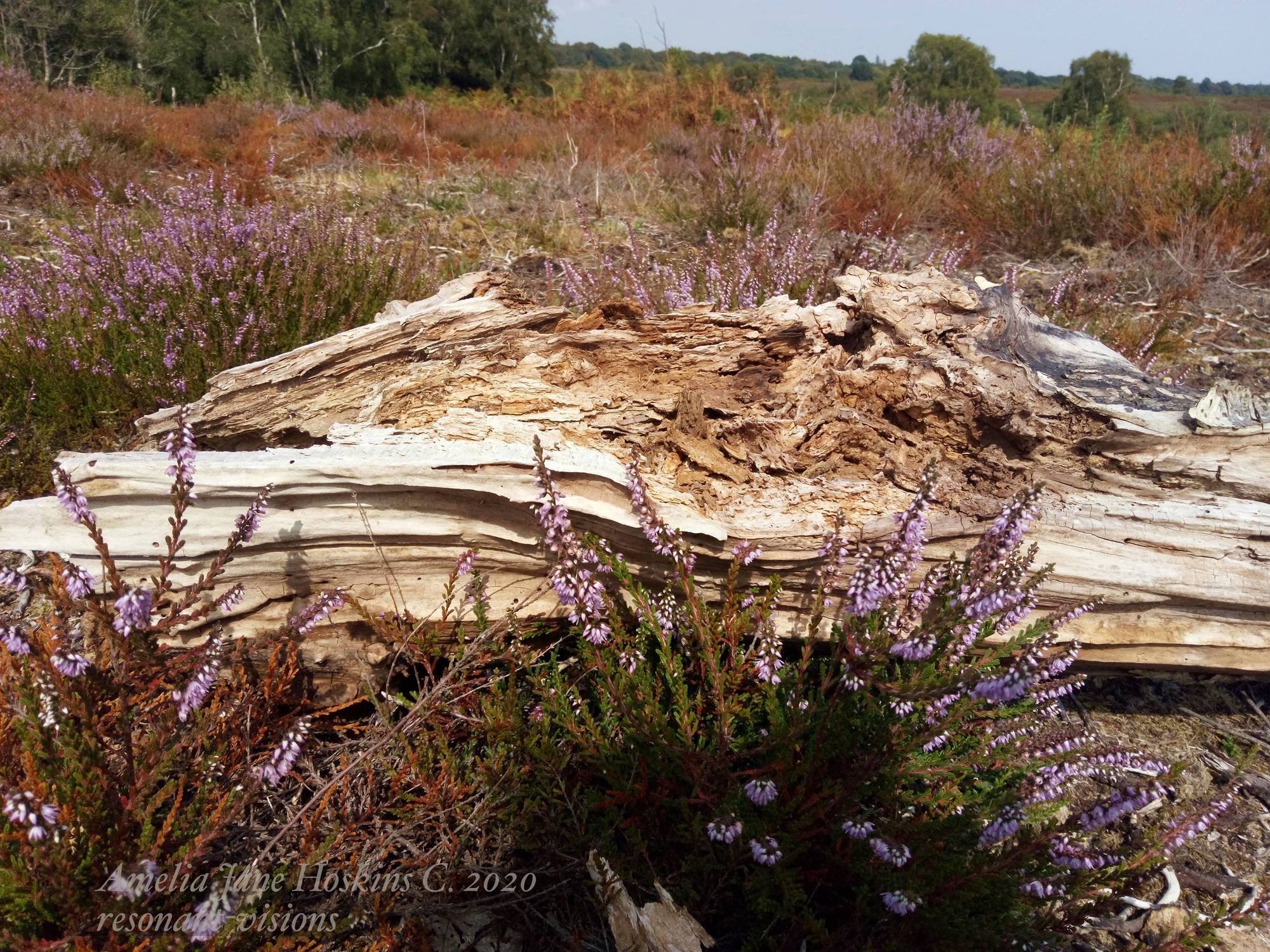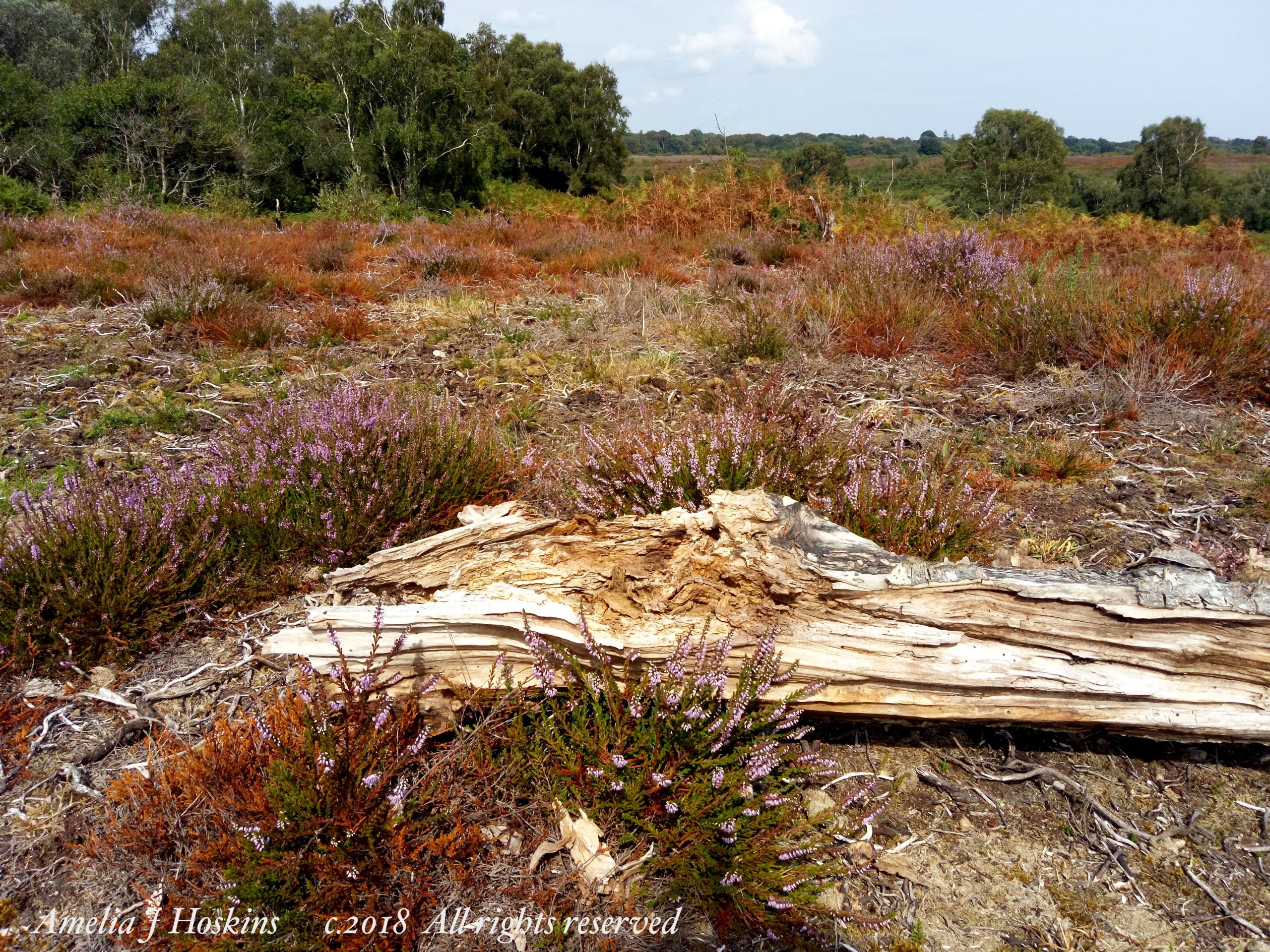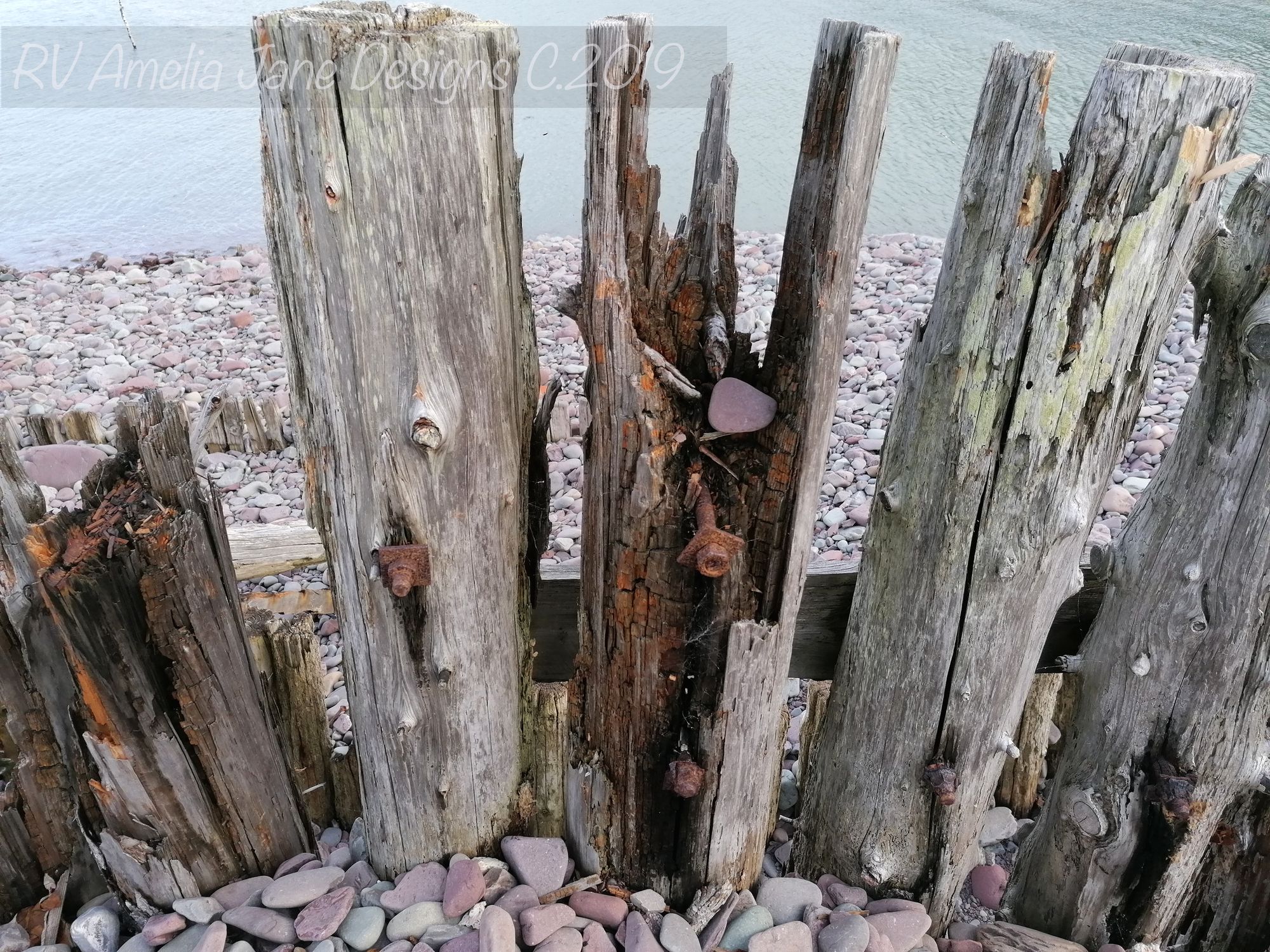Centropy-Entropy The Cycle of Life
CENTROPY - ENTROPY
Everything is in cycles. As nature decays it has its own beauty of naturalness; often seen contrasted with life, like the seasonal heather flowers in this image of autumnal coloured ferns, and dried wood. The waves of wind worn trunk behind the heather provide a natural scenic backdrop. Sun bleached dried wood may no longer be growing, but in entropy the natural decay has a beauty, where the shape changes. The background heather in bright russet, is attractive even in decay.
PHYSICS OF LIVING MATTER
Walter Russel's diagram shows matter either in state of centropy or entropy, the phase process of integration and disintegration. We can imagine that just as nature's method of storing energy in mass, as flowers turn to seeds (containing the next new life, grown in the torus energy field); so it will be extending to the galaxies, and throughout the universe.
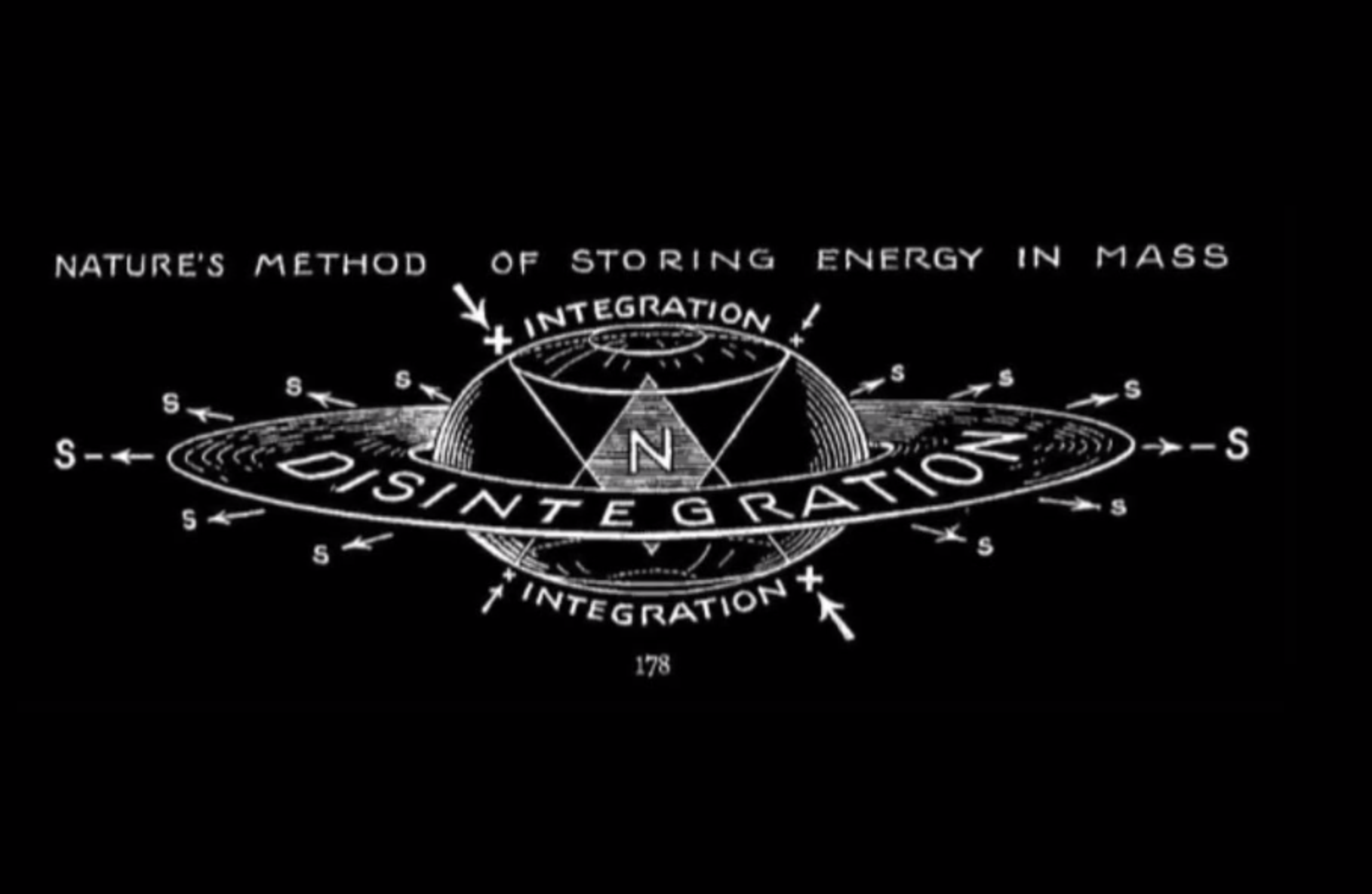
The Greek philosphers had intuition about elemental processes in the atomic world long before modern physics
[Italics text quotes from Weiner Heisenberg, Physics and Philosophy The Revolution in Modern Science, 1958.]
Anaximander 'taught that the primary substance was infinite, eternal and ageless and that it encompassed the world. This primary substance is transformed into the various substances with which we are familiar. According to Anaximander, there is "eternal motion," the creation and passing away of worlds from infinity to infinity; all arising and passing away.'
"Into that from which things take their rise they pass away once more, as is ordained, for they make reparation and satisfaction to one another for their injustice according to the ordering of time."
Theophastrus quoting Anaximander
Heraclitus of Ephesus thought 'that which moves' the basic element (we might say 'energy') in the form of change; which fits with centropy/entropy. This 'primary substance was infinite, eternal and ageless and that it encompassed the world'
'...that the change itself is the fundamental principle; the "imperishable change, that renovates the world" as the poets have called it.'
'The difficulty, to reconcile the idea of one fundamental principle with the infinite variety of phenomena, is solved for him by recognizing that the strife of the opposites is really a kind of harmony. For Heraclitus the world is at once one and many, it is just "the opposite tension" of the opposites that constitutes the unity of the One.'
His idea of the tension of conjugates is our idea of yin-yang, an element or force which is only in existence because it has an associated 'other' [e.g. hot/cold]: all phenomena held in balance; hence the 'one and the many'. Holons. See William Blake quote on 'contraries' ]
A more complicated vision was that of Empedocles:
'...the formation of the world in the following picture : First, there is the infinite Sphere of the One... but in the primary substance all the four "roots"are mixed together by Love.
'Then, when Love is passing out and Strife coming in, the elements are partially separated and partially combined. After that the elements are completely separated and Love is outside the World. Finally, Love is bringing the elements together again and Strife is passing out, so that we return to the original Sphere'.
Although Empedocles ‘love vs strife’ sounds odd and unscientific use of words to us, if we translate his love and strife to harmony and disharmony; good energy/new growth (becoming) being harmonious, and bad energy or a destructive force being 'strife'; we can visualise the concept with Walter Russel's geometric illustration. Empedocles envisioned the wholeness of the sphere, 'knocked out of shape' by elements of disharmony then coming back into being and wholeness.
Modern science shows that sound and emotions can affect vibrational results, as with cymatics. the effect on water. We could indeed believe that a general expression of ‘love’ (all good true and beautiful) can ‘create’ vibrations of renewal; whereas we are very aware these days that bad, low emotions, or ‘strife’ as Permenides terms it, can reduce health and life. (Proven with humans and plants). We can also interpret Heraclitus (energy - all arises and returns), Anaximander (eternal substance) in the same way.
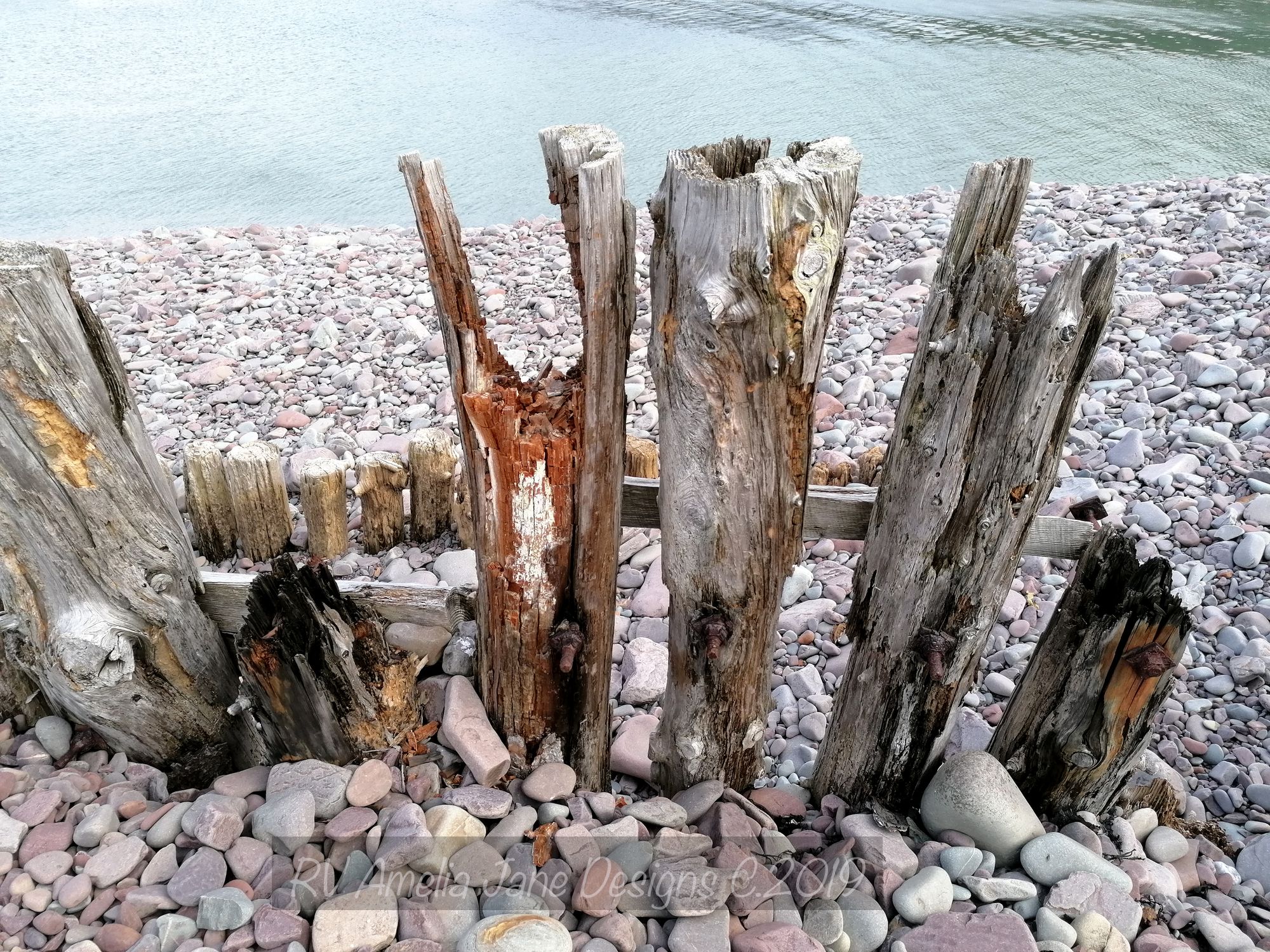
PORLOCK GROYNES - Heritage site.
Weathered wood over decades produces interesting shapes. Additional rust colour from nails. [Link to full Porlock Groynes page]
Controversially, abandoned wind turbines, man made, does not decay in beautiful ways, and gives nothing to the land. [link to SA turbines abandoned Crowhouse video)
